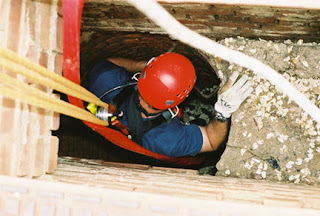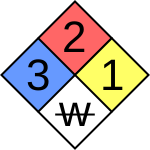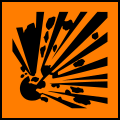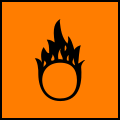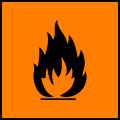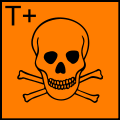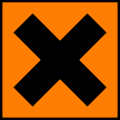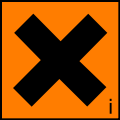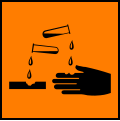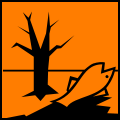Tuesday, September 9, 2008
A respirator is a device designed to protect the wearer from inhaling harmful dusts, fumes, vapors, and/or gases. Respirators come in a wide range of types and sizes used by the military, private industry, and the public. Respirators range from cheaper, single-use, disposable masks to reusable models with replaceable cartridges.
There are two main categories: the air-purifying respirator, which forces contaminated air through a filtering element, and the air-supplied respirator, in which an alternate supply of fresh air is delivered. Within each category, different techniques are employed to reduce or eliminate noxious airborne contents.
Early development of respirators
The history of protective respiratory equipment can be traced back as far as the 16th century, when Leonardo da Vinci suggested that a finely-woven cloth dipped in water could protect sailors from a toxic weapon made of powder that he had designed. [1] Alexander von Humboldt introduced a primitive respirator in 1799 when he was working in Prussia as a mining engineer.
Practically all the early respirators consisted of a bag placed completely over the head, fastened around the throat with windows through which the wearer could see. Some were rubber, some were made of rubberized fabric, and still others of impregnated fabric, but in most cases a tank of compressed air or a reservoir of air under slight pressure was carried by the wearer to supply the necessary breathing air. In some devices certain means were provided for the adsorption of carbon dioxide in exhaled air and the rebreathing of the same air many times; in other cases valves were provided for exhalation of used air.

The first US patent for an air purifying respirator was granted to Lewis P. Haslett in 1848 for his 'Haslett's Lung Protector,' which filtered dust from the air using one-way clapper valves and a filter made of moistened wool or a similar porous substance. Following Haslett, a long string of patents were issued for air purifying devices, including patents for the use of cotton fibers as a filtering medium, for charcoal and lime absorption of poisonous vapors, and for improvements on the eyepiece and eyepiece assembly. Hutson Hurd patented a cup-shaped mask in 1879 that became widespread in industrial use, and Hurd's H.S. Cover Company was still in business in the 1970s.
Inventors were also developing air purifying devices across the Atlantic. John Stenhouse, a Scottish chemist, was investigating the power of charcoal, in its various forms, to capture and hold large volumes of gas. He put his science to work in building one of the first respirators able to remove toxic gases from the air, paving the way for activated charcoal to become the most widely used filter for respirators. British physicist John Tyndall took Stenhouse's mask, added a filter of cotton wool saturated with lime, glycerin, and charcoal, and invented a 'fireman's respirator,' a hood that filtered smoke and gas from air, in 1871; Tyndall exhibited this respirator at a meeting of the Royal Society in London in 1874. Also in 1874, Samuel Barton patented a device that 'permitted respiration in places where the atmosphere is charged with noxious gases, or vapors, smoke, or other impurities.' German Bernhard Loeb patented several inventions to 'purify foul or vitiated air,' and counted among his customers the Brooklyn Fire Department.
Chemical Warfare
The Second Battle of Ypres was the first time Germany used chemical weapons on a large scale on the Western Front in World War I and the first time a colonial force (Canadians) pushed back a major European power (Germans) on European soil, which occurred in the battle of St. Juliaan-Kitcheners' Wood. 168 tons of chlorine gas were released on 22 April over a four mile front. Around 6,000 troops died within ten minutes from asphyxiation. The gas affects the lungs and the eyes causing respiration problems and blindness. Being denser than air it flowed downwards forcing the troops to climb out of trenches.
Eventually reserve Canadian troops held the front, being away from the attack, using urine-soaked cloths as primitive respirators. A Canadian soldier had discovered that the ammonia in urine would react with the chlorine, neutralizing it, and that the water would dissolve the chlorine, allowing the soldiers to breathe through the gas. This is the first recorded response and defense against chemical attacks using respirators.
Modern respirator technology
All respirators have some type of facepiece held to the wearer's head with straps, a cloth harness, or some other method. The facepiece of the respirator covers either the entire face or the bottom half of the face including the nose and mouth. Half-face respirators can only be worn in environments where the contaminants are not toxic to the eyes or facial area. For example, someone who is painting an object with spray paint could wear a half-face respirator, but someone who works with chlorine gas would have to wear a full-face respirator. Facepieces come in many different styles and sizes, to accommodate all types of face shapes, and there are many books and references available for determining which kind of hazard requires what type of respirator.
Air-purifying respirators

Air-purifying respirators are used against particulates (such as smoke or fumes), gases, and vapors that are at atmospheric concentrations less than immediately dangerous to life and health. The air-purifying respirator class includes:
- negative-pressure respirators, using mechanical filters and chemical media
- positive-pressure units such as powered air-purifying respirators (PAPRs)
- Escape Only respirators such as Air-Purifying Escape Respirators (APER) for use by the general public for Chemical, Biological, Radiological, and Nuclear (CBRN) terrorism incidents.
Half- or full-facepiece designs of this type are marketed in many varieties depending on the hazard of concern. They use a filter which acts passively on air inhaled by the wearer. Some common examples of this type of respirator are single-use escape hoods and filter masks. The latter are typically simple, light, single-piece, half-face masks and employ the first three mechanical mechanisms in the list below to remove particulates from the air stream. The most common of these is the disposable white N95 variety. The entire unit is discarded after some extended period or a single use, depending on the contaminant. Filter masks also come in replaceable-cartridge, multiple-use models. Typically one or two cartridges attach securely to a mask which has built into it a corresponding number of valves for inhalation and one for exhalation.
Mechanical filter respirators
Mechanical filter respirators retain particulate matter when contaminated air is passed through the filter material. This was the method used by early inventors such as Haslett and Tyndall. Wool is still used today as a filter, along with other substances such as plastic, glass, cellulose, and combinations of two or more of these materials. Since the filters cannot be cleaned and reused and therefore have a limited lifespan, cost and disposability are key factors. Single-use, disposable as well as replaceable cartridge models are common.
Mechanical filters remove contaminants from air in the following ways:
- by particles which are following a line of flow in the airstream coming within one radius of a fiber and adhering to it, called interception;
- by larger particles unable to follow the curving contours of the airstream being forced to embed in one of the fibers directly, called impaction; this increases with diminishing fiber separation and higher air flow velocity
- by an enhancing mechanism called diffusion, which is a result of the collision with gas molecules by the smallest particles, especially those below 100 nm in diameter, which are thereby impeded and delayed in their path through the filter; this effect is similar to Brownian motion and raises the probability that particles will be stopped by either of the two mechanisms above; it becomes dominant at lower air flow velocities
- by using certain resins, waxes, and plastics as coatings on the filter material to attract particles with an electrostatic charge that holds them on the surface of the filter material;
- by using gravity and allowing particles to settle into the filter material (this effect is typically negligible); and
- by using the particles themselves, after the filter has been used, to act as a filter medium for other particles.
Considering only particulates carried on an air stream and a fiber mesh filter, diffusion predominates below the 0.1 μm diameter particle size. Impaction and interception predominate above 0.4 μm. In between, near the 0.3 μm most penetrating particle size (MPPS), diffusion and interception predominate.
For maximum efficiency of particle removal and to decrease resistance to airflow through the filter, particulate filters are designed to keep the velocity of air passing through the filter medium as low as possible. This is achieved by manipulating the slope and shape of the filter to provide larger surface area.
A substantial advance in mechanical filter technology was the HEPA filter, invented during the Manhattan Project for protection from radioactive particles and later adapted to additional uses. A HEPA filter can remove as much as 99.97% of all airborne particulates with aerodynamic diameter of 0.3 microns or greater. In the United States, the categories below were established by NIOSH to describe particulate filters.
| Oil resistance | Rating | Description |
| Not oil resistant | N95 | Filters at least 95% of airborne particles |
| N99 | Filters at least 99% of airborne particles | |
| N100 | Filters at least 99.97% of airborne particles | |
| Oil Resistant | R95 | Filters at least 95% of airborne particles |
| R99* | Filters at least 99% of airborne particles | |
| R100* | Filters at least 99.97% of airborne particles | |
| Oil Proof | P95 | Filters at least 95% of airborne particles |
| P99* | Filters at least 99% of airborne particles | |
| P100 | Filters at least 99.97% of airborne particles | |
| *No NIOSH approvals are held by this type of disposable particulate respirator. | ||
Chemical cartridge respirators
Chemical cartridge respirators use a cartridge to remove gases, volatile organic compounds (VOCs), and other vapors from breathing air by adsorption, absorption, or chemisorption. A typical organic vapor respirator cartridge is a metal or plastic case containing from 25 to 40 grams of sorption media such as activated charcoal or or certain resins. The service life of the cartridge varies based, among other variables, on the carbon weight and molecular weight of the vapor and the cartridge media, the concentration of vapor in the atmosphere, the relative humidity of the atmosphere, and the breathing rate of the respirator wearer. When filter cartridges become saturated or particulate accumulation within them begins to restrict air flow, they must be changed.
Powered air-purifying respirators
The purpose of this type of respirator is to take air that is contaminated with one or more types of pollutants, remove a sufficient quantity of those pollutants and then supply the air to the user. There are different units for different environments. The units consist of a powered fan which forces incoming air through one or more filters for delivery to the user for breathing. The fan and filters may be carried by the user or with some units the air is fed to the user via tubing while the fan and filters are remotely mounted.
The type of filtering must be matched to the contaminants that need to be removed. Some respirators are designed to remove fine particulate matter such as the dust created during various woodworking processes. They are not suitable when working with volatile organic compounds such as those used in many spray paints. At the same time filters that are suitable for volatile substances must typically have their filter elements replaced more often than a particulate filter. In addition there is some confusion over terminology. Some literature and users will refer to a particulate filtering unit as a dust mask or filter and then use the term respirator to mean a unit that can handle organic solvents.
Self-contained breathing apparatus
An SCBA typically has three main components: a high-pressure tank (e.g., 2200 psi to 4500 psi), a pressure regulator, and an inhalation connection (mouthpiece, mouth mask or face mask), connected together and mounted to a carrying frame. There are two kinds of SCBA: open circuit and closed circuit.
Open-circuit industrial breathing sets are filled with filtered, compressed air, the same air we breathe normally. The compressed air passes through a regulator, is inhaled by the user, then exhaled out of the system, quickly depleting the supply of air. Most modern SCBAs are open-circuit. An open-circuit SCBA has a full-face mask, regulator, air cylinder, cylinder pressure gauge, and a harness with adjustable shoulder straps and waist belt which lets it be worn on the back. Air cylinders are made of aluminum, steel, or of a composite construction (usually fiberglass-wrapped aluminum.) Commonly an SCBA will be of the "positive pressure" type, which supplies a slight steady stream of air to stop toxic fumes or smoke from leaking into the mask. Not all SCBAs are positive pressure; others are of the "demand" type, which only supply air on demand (i.e., when the regulator senses the user inhaling). All fire departments and those working in toxic environments need to use the positive pressure SCBA for safety reasons.
The closed-circuit type filters, supplements, and recirculates exhaled gas: see rebreather for more information. It is used when a longer-duration supply of breathing gas is needed, such as in mine rescue and in long tunnels, and going through passages too narrow for a big open-circuit air cylinder.


